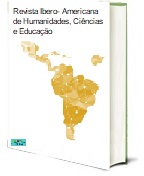USE OF RACTOPAMINE TO IMPROVE THE FAT/MEAT RATIO FROM BRAZILIAN PIGS
DOI:
https://doi.org/10.51891/rease.v8i11.7932Keywords:
Pork. Food insecurity. Ractopamine. Swine farming.Abstract
Brazil stands out as the fourth largest pork producer in the world (3.88% of the total) and with an enormous capacity to expand pork production throughout the national territory, since more than 65% of production is concentrated in the smallest region (South) of the country and accounts for more than 90% of all national exports. Pork production is directly related to the addition of Ractopamine (RAC) to the pigs' diet before slaughter. In this work, a study of the current state of the art (2017-2022) was carried out in relation to the use of RAC in Brazilian pig farming and how this substance influences the increase in the meat/fat ratio and thickness of other edible parts, including pork loin , despite the fact that RAC has been banned in more than 160 countries due to the food insecurity caused by the active ingredient. The work methodology consisted of carrying out a search for works on different research platforms using keywords. The articles found were submitted to a selection from the full reading of the works that resulted in the selection of some in order to structure the present work. The results indicated that the addition of RAC to the pigs' diet provided an increase in the meat/fat ratio and in the thickness of other parts of the pig, such as the loin. In addition, numerous research groups have been making efforts in the search for active principles with physical-chemical-biological properties capable of providing greater food safety.
Downloads
Downloads
Published
How to Cite
Issue
Section
Categories
License
Atribuição CC BY

